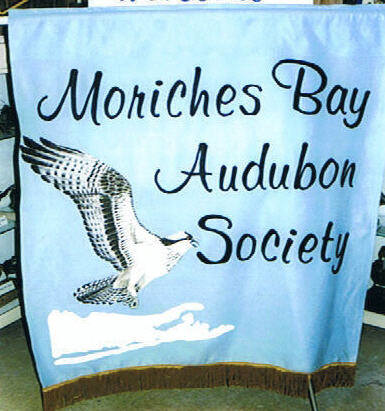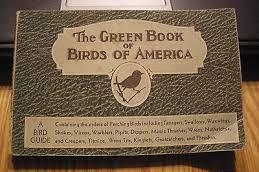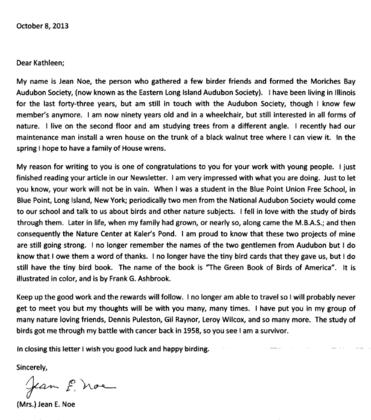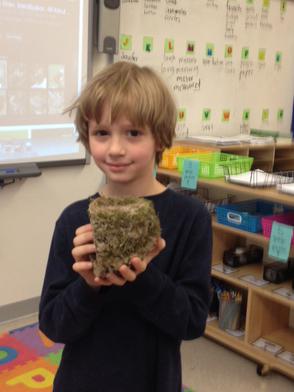This article appeared in the Sept/Oct 2014 issue of The Osprey
Jean Noe —
A Lifetime of Birding
As told to and written by Kathleen Heenan
Last summer I wrote in this newsletter about teaching birding in under served New York City public schools, grades 2- 5 in a program called For the Birds sponsored by New York State Audubon. Shortly afterwards, Sally Newbert, newsletter editor, received a letter from Jean Noe, the 1967 founder of Moriches Bay Audubon Society (now ELIAS) and the Kahlers Pond Center. In the letter (which delighted me) Mrs. Noe praised the work of For The Birds, recounting visits by Audubon staff members to her school to teach about birds in 1934 to 1936. Subsequently, birding became her passion and avocation.
She had received this newsletter via her son Bill in her retirement home in Elgin, Illinois, 40 miles northwest of Chicago. When I learned of the letter, I spoke with Mrs. Noe and told her and that I would try to meet and interview her after the winter thaw. She told me not to wait too long because she was 91.
Quite often, I think about my own students and wonder whether some of them will become birders or at least appreciate nature. Now, perhaps I had an opportunity to find out how Mrs. Noe’s early introduction to birding brought on her passion in her adult years. So, along with my husband, Clary Olmstead, and one of the founders and lead teachers of For The Birds, Wendy Paulson, now living in Barrington, IL, I visited Mrs. Noe in late June.
Jean Post Noe was born in Ronkonkama in 1923 and grew up in Blue Point. Her parents were not birders but they were outdoors people. “My father had a boat We went out on the bay and spent lots of time at the beach.” Her grandfather was a guide who hunted deer and led hunting parties. “My sister and I were outdoors all the time. We especially loved looking for the trailing arbutus and their beautiful white blossoms in the open fields near our home in the springtime. I was always a walker. You can’t go for a walk without seeing birds.”
Mrs. Noe and her 12 classmates were the beneficiaries of a program similar to For The Birds (FTB). It too was sponsored by Audubon. When she was in grammar school in the Blue Point Union Free School, two or three times a year during 1934 to 36 one or two men who worked with Audubon came to her school. “It was something we absolutely loved.” What Mrs. Noe remembers most was their efforts “to discourage anybody from destroying (the birds).” The students were given bird cards (Wendy thought they might be the sets of cards produced by Arm & Hammer Soda with a bird photo on one side and a description on the flip side). They also were given “The Green Book Birds of America”, one of a set of three books. Mrs. Noe’s son had ordered one of the books on Amazon and they presented it to me. The 3”x 3” paperback book has pictures and flowery descriptions of about 60 birds.
When Mrs. Noe began birding as an adult, she was spurred on by field trips with Roy Wilcox. “He was a great inspiration. There were three of us in the back seat. Roy and his wife were in the front. We would be riding along with the windows closed when Roy would say “I just heard such and such bird.” We would stop and there would be the bird, correctly identified by Roy. He had such keen hearing.”
In 1958, at the age of 35, Mrs. Noe developed cancer. Birding helped her survive that restrictive year. She recalled: “Birding became so important to me during the year which I was recovering. I studied the birds. Mostly the birds that I could see from my windows. Fortunately, we were in a very good location and a couple of my neighbors also put out food for the birds. Senix Creek ran behind the houses across the street from me and Moriches Bay was at the end of Union Avenue. I always had from 18 to 24 species at my feeders daily. It was interesting to me to see the different reactions to a situation from the various birds.”
Later, while living in Center Moriches with her husband, Bill, and her four children, three boys and a girl, she and four of her women friends formed a bird club. “We started out as a group simply sharing our sightings and had a good time.” This group of women, Carol Tveekrem, Ethel Havins, Marcella Borgart and Ida Johnson, at the suggestion of Mrs. Noe, decided to become an Audubon chapter. As a result, in 1967 Moriches Bay Audubon Society was formed. Membership started with five people, but quickly grew to 300 members. The year before, Roy Wilcox had taught an adult class in ornithology in Westhampton which contributed to the rapid membership growth. Mrs. Noe obtained the class list and called the participants encouraging them to join. Mrs. Noe proudly said, “We were an active chapter with a newsletter.” Meetings were held once a month starting at the Center Moriches Library. Jerry Donnelly, the librarian, was an Audubon member. But soon the membership became too large for that space, so the meetings were moved to the local school. Later, after Mrs. Noe departed for the midwest in 1971, meetings were held at the the Quogue Wildlife Refugee and still are. Once a week they had a field trip. People like Roy Wilcox were guides. Mrs. Noe never was a guide.
The Kahler Pond Center was Mrs. Noe’s next project. The Center became a place for school children to explore the world of birds and nature. An old barn on Montauk Highway between East and Center Moriches was converted into a nature center with the permission of the town of Brookhaven. School groups were brought in to feed the ducks and explore the grounds behind the Center. Half of the class would stay inside to look at interesting nature artifacts. The other group would go outside. The place soon had nests and museum skins of birds inside. The Center had been given special permission to collect dead birds. Mrs. Noe and Carol Tveekrem took classes to learn to make museum skins. Mrs. Noe remembered, “It was easy to take the skin off, but I had trouble taking out the eyes.” Later, Carol would become a bird bander in Minnesota. Mrs. Noe would teach others to prepare museum skins, including one of her son’s friends who subsequently became head of a nearby nature preserve in the Elgin area. “He always credited me with teaching him that technique.” With help from the Long Island Lighting Company and the telephone companies the Center erected poles for Osprey nests. “Men from the Moriches Bay Audubon Society built and put up racks.”
Mrs. Noe recalled receiving thank you letters from students after their visits to the Center. “They were wonderful things to read; I sat on my bed and cried.” Wendy and I also have many student thank you letters and drawings. Wendy said she takes them out to read “whenever I’m feeling unhappy .”
In 1971, Mrs. Noe left Center Moriches to live in South Elgin. “I did not want to leave Center Moriches for the midwest because I knew I would miss the Moriches Bay Audubon Society.” However, not surprisingly, Mrs. Noe became active in the local Audubon Society In Elgin. Nearby, in Lord’s Park, there was a museum that had many mounted birds which were mislabeled. Mrs Noe’s proposal to correctly identify them was turned down. For two years she did the local Audubon newsletter. She remembered longingly about how pro-active she and her friends had been in the Moriches Bay Audubon Society.
Mrs. Noe, now a widow, will be 92 in February. Her mobility is restricted but her mind, spirit and sense of humor are still excellent. She received permission to have a bird house suited for wrens installed on a black walnut tree outside her second floor window. There have been no takers so far, but she is hoping that perhaps a White-breasted Nuthatch or a Chickadee will take up residence. Wendy explained that the male wren often builds three or four nests from which his female may choose one in which she will lay her eggs. Mrs. Noe chimed in that the female then raises the chicks by herself while the male goes a courting again.
Mrs. Noe told us a few good stories about birding on Dune Road. She and Carol Tveekrem were out east on Dune Rd. one day when they spotted a Snowy Owl on a telephone pole. The bird was stretching out his wings as he perched high above them. Suddenly, he took off outstretched in all his glory.
Another time while on Dune Rd. on a windy day, she and her daughter Cathy caught sight of a gull caught in some wires near the Westhampton Bridge. The bird was struggling to get loose. Her daughter was crying, asking her mother to do something. Mrs. Noe went to the Westhampton police department suggesting that one of the policemen come out to shoot the bird to put him out of his misery. The officer responded, “What kind of a shot do you think we are? Plus it is a windy day.”
Wendy and I were inspired by Mrs. Noe’s life long interest and work in birding. We were especially pleased to learn of her childhood introduction to birding by the Audubon Society some 80 plus years ago. We each will be looking for a future Mrs. Noe in our respective classes this coming year. Wendy, along with 28 other volunteers, will teach birding in a three year old Chicago based program, Birds in My Neighborhood, sponsored by Chicago Audubon and Open Lands. They will be in 17 schools, all located near parks.
I will return to my school near Van Cortlandt Park where I will be on the lookout for potential life long birders. Right now, I’m thinking of four boys in the three classes I taught in this past school year. There was Jackson who brought in a Phoebe’s nest found under the porch at his grandparents’ house, Christian who spotted two red-tail hawks circling in the sky as he sat in the classroom, and the two best friends who told me that they, “birded every day,” one of whom identified two Baltimore Orioles and the other of whom led me to an active robin’s nest on a field trip in Central Park.
About Our Founding
© 2017 Eastern Long Island Audubon Society
Jean Noe, seated between Wendy Paulson, left and Kathleen Heenan. Wendy and Kathleen visited Mrs. Noe in Elgin, Il in 2014.
The letter that Mrs. Noe wrote to ELIAS that prompted this article.
The Green Book - Birds of America given to students by Audubon in the 1930's to help them learn about the birds. It is, or was, still available on Amazon.
Will, Jackson, one of the students in Kathleen Heenan's classes, become a life-long birder? He brought in a Phoebe's nest that he found under his grandparent's home. He and his friend go birding every day.
Copyright 2026 Eastern Long Island Audubon Society





